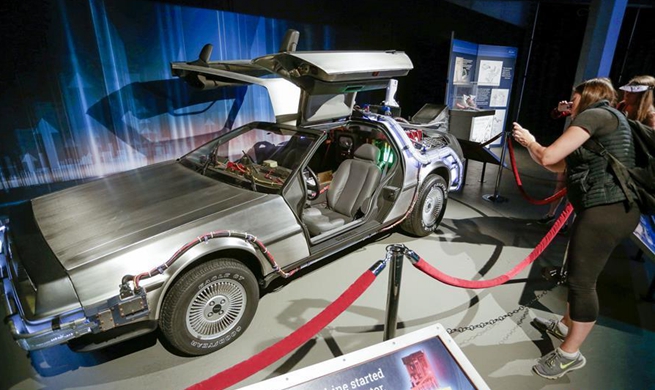by Ren Ke, Zhu Sheng
DUISBURG, Germany, Aug. 19 (Xinhua) -- For decades, the city of Duisburg lying at the heartland of Germany's industrial Ruhr region, had struggled with a depression just like other heavy industry cities around the world that were experiencing a structural transformation.
But nowadays the world's biggest inland port is changing -- the sites once used as steel mills have been turned into transport terminals. Trucks come and go around the cities and crane operators unload containers from freight trains and pile them up one above another.
"The freight services from China are really important for us," said Amelie Erxleben, a staff member with the Duisburg Intermodal Terminal (DIT), the biggest of the nine terminals of the Port of Duisburg, told Xinhua.
As Duisburg is ambitious to become the hub of logistics in the center of West Europe, it is grasping a chance for revival as China is to revive the ancient Silk Road.
BOOMING LOGISTICS CENTER
"Take a look around, Chinese containers are everywhere here," said George, a 58-year-old German truck driver, pointing at a container nearby with a logo CRE, which is short for China Railway Express. He is among hundreds of drivers waiting at the DIT for a freighter order.
CRE is the railway freight service linking China and Europe. According to the China Railway Corporation, in the first half of this year, the service has linked 48 Chinese cities with 42 cities in 14 European states and 2,497 trains traveled the route, a 69-percent rise compared with the same period of last year.
George said CRE trains have brought significantly more Chinese businesses to the terminals and Port of Duisburg. The products are no longer silk, tee or ceramics. Made-in-China laptops, mobile phones and textiles are the most popular products reaching Europe onboard the train, while made-in-Europe high value-added fine wines and vehicle spare parts are shipped to China.
Erxleben said now 25 freight trains travel every week between Chinese cities and Duisburg, 15 China-bound and 10 Europe-bound, accounting for nearly one third of the freight volumes of DIT.
"All that starts here!" said Erxleben, standing at the end of the railway at the DIT. That afternoon, another freight train will travel cross-continently to arrive here, and three cranes are prepared to unload containers and transfer them through Rhine River or trucks to other European cities.
But four years ago, only two or three freight trains traveled between China and Duisburg.
Due to the surge of freight volumes, the terminal became narrow and busy. About 600 to 800 trucks come and go every day, and the terminal expanded its truck fleet from ten trucks several years ago to 60 at present. The terminal has also bought 200,000 square meters to store more containers.
NEW JOBS CREATED
Johannes Pflug, who is responsible for China affairs in the Duisburg municipality, told Xinhua that over 6,000 jobs has been created by CRE.
Markus Taube, an economist with the University of Duisburg-Essen, has intensively studied the Silk Road and found that the city benefits from the initiative.
"We've been able to show that investments have been made, that jobs have been created, in the context of this Silk Road Initiative, which means we talk about more than just containers arriving in Duisburg and then being shipped here, but there is a small industry around it, which generates tax revenue for the city, creates jobs and strengthens the reputation and importance of the city," Taube told the Deutschlandfunk earlier this year.
Duisburg has gained significant publicity in recent years, attracting journalists from nearly all parts of the world.
Soeren Link, mayor of Duisburg, even said the city is the "China Town" in Germany.
On the way to the Duisburg port, Kahraman, a taxi driver, said not long before he drove a group of Japanese reporters to the port to cover the CRE.
In ancient times, caravans traveled across the Eurasian hinterland between the Middle Kingdom and Europe, a scenario driving the German geographer Ferdinand von Richthofen to invent the term "Silk Road" in late 19th century.
The China-Europe cargo train service is widely referred to as a key project within the framework of the Belt and Road Initiative, or formally the overland Silk Road Economic Belt and the 21st Century Maritime Silk Road, which was put forward by China in 2013 in a bid to boost connectivity and seek common prosperity.













